NEAR-Shoemaker signing off
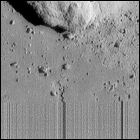 NASA’s NEAR-Shoemaker unmanned spacecraft, still on the surface of asteroid 433 Eros, sends its final signals to Earth before shutting down. Launched in 1996, NEAR-Shoemaker swung by asteroid 253 Mathilde before making its way to Eros via an Earth gravity assist maneuver. It orbited Eros for a year, having started its operations in close proximity to the asteroid a year later due to a technical problem in 1998 that nearly destroyed the space probe. Future asteroid missions such as Hayabusa and Dawn will refine the science of traveling to and studying asteroids.
NASA’s NEAR-Shoemaker unmanned spacecraft, still on the surface of asteroid 433 Eros, sends its final signals to Earth before shutting down. Launched in 1996, NEAR-Shoemaker swung by asteroid 253 Mathilde before making its way to Eros via an Earth gravity assist maneuver. It orbited Eros for a year, having started its operations in close proximity to the asteroid a year later due to a technical problem in 1998 that nearly destroyed the space probe. Future asteroid missions such as Hayabusa and Dawn will refine the science of traveling to and studying asteroids.
NEAR-Shoemaker lands on Eros
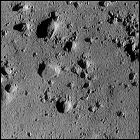 NASA’s NEAR-Shoemaker unmanned spacecraft gently touches down on the surface of asteroid 433 Eros, the first human-made space vehicle to land on such a body. Ground controllers are surprised to discover that NEAR-Shoemaker survives the landing, which was originally meant to end the mission; a two-week mission extension allows scientists to get readings from instruments that are now mere inches from Eros’ surface.
NASA’s NEAR-Shoemaker unmanned spacecraft gently touches down on the surface of asteroid 433 Eros, the first human-made space vehicle to land on such a body. Ground controllers are surprised to discover that NEAR-Shoemaker survives the landing, which was originally meant to end the mission; a two-week mission extension allows scientists to get readings from instruments that are now mere inches from Eros’ surface.
NEAR gets a new name
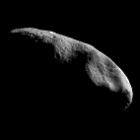 NASA’s NEAR (Near Earth Asteroid Rendezvous) unmanned spacecraft is officially renamed NEAR-Shoemaker, honoring Eugene Shoemaker, discoverer of multiple asteroids and comets, who died in 1997. Shoemaker had also put his geology skills to use in training Apollo astronauts after a medical diagnosis prevented him from joining the astronaut corps himself. NEAR-Shoemaker continues to orbit asteroid 433 Eros.
NASA’s NEAR (Near Earth Asteroid Rendezvous) unmanned spacecraft is officially renamed NEAR-Shoemaker, honoring Eugene Shoemaker, discoverer of multiple asteroids and comets, who died in 1997. Shoemaker had also put his geology skills to use in training Apollo astronauts after a medical diagnosis prevented him from joining the astronaut corps himself. NEAR-Shoemaker continues to orbit asteroid 433 Eros.
NEARer to Eros
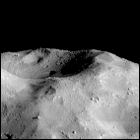 After orbiting the sun behind asteroid 433 Eros for a year since a failed thruster burn almost ended its mission, unmanned space probe NEAR (Near Earth Asteroid Rendezvous) fires its engines successfully, slowing itself to fall into orbit around Eros. During the weeks leading up to the orbital insertion maneuver, NEAR observed the space around Eros to ensure that no satellites existed with which it might collide. NEAR’s close study of Eros officially begins, and further maneuvers bring it into an ever-closer orbit around the asteroid.
After orbiting the sun behind asteroid 433 Eros for a year since a failed thruster burn almost ended its mission, unmanned space probe NEAR (Near Earth Asteroid Rendezvous) fires its engines successfully, slowing itself to fall into orbit around Eros. During the weeks leading up to the orbital insertion maneuver, NEAR observed the space around Eros to ensure that no satellites existed with which it might collide. NEAR’s close study of Eros officially begins, and further maneuvers bring it into an ever-closer orbit around the asteroid.
NEAR death experience?
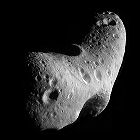 NASA’s unmanned NEAR (Near Earth Asteroid Rendezvous) unmanned space probe fails to fire its thrusters for a critical engine burn to keep it aimed at asteroid 433 Eros. The vehicle instead goes into an automatic safe mode and enters a tumble that drains both its batteries and its fuel supply to dangerously low levels, and it is out of contact with Earth for over a day. As a result, NEAR merely flies past Eros at a distance of almost 2400 miles, leaving ground controllers to devise a strategy to re-aim NEAR so it can catch up to and try once again to orbit the asteroid (the primary objective of its mission). This maneuver will take a year to complete.
NASA’s unmanned NEAR (Near Earth Asteroid Rendezvous) unmanned space probe fails to fire its thrusters for a critical engine burn to keep it aimed at asteroid 433 Eros. The vehicle instead goes into an automatic safe mode and enters a tumble that drains both its batteries and its fuel supply to dangerously low levels, and it is out of contact with Earth for over a day. As a result, NEAR merely flies past Eros at a distance of almost 2400 miles, leaving ground controllers to devise a strategy to re-aim NEAR so it can catch up to and try once again to orbit the asteroid (the primary objective of its mission). This maneuver will take a year to complete.
NEAR at Mathilde
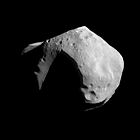 NASA’s NEAR (Near Earth Asteroid Rendezvous) unmanned spacecraft closes to within 750 miles of its first target, asteroid 253 Mathilde. Taking over 500 pictures of the asteroid and determining its mass and dimensions (roughly 31 miles in diameter). At the time of this flyby, Mathilde is the largest asteroid to be explored by a spacecraft. Discovered in 1885, Mathilde takes four years to orbit the sun within the main asteroid belt between Mars and Jupiter. NEAR Shoemaker moves on to its next destination, asteroid 433 Eros, which it is expected to reach in 1998.
NASA’s NEAR (Near Earth Asteroid Rendezvous) unmanned spacecraft closes to within 750 miles of its first target, asteroid 253 Mathilde. Taking over 500 pictures of the asteroid and determining its mass and dimensions (roughly 31 miles in diameter). At the time of this flyby, Mathilde is the largest asteroid to be explored by a spacecraft. Discovered in 1885, Mathilde takes four years to orbit the sun within the main asteroid belt between Mars and Jupiter. NEAR Shoemaker moves on to its next destination, asteroid 433 Eros, which it is expected to reach in 1998.
NEAR launched
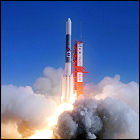 The NEAR (Near Earth Asteroid Rendezvous) unmanned spacecraft, built and flown for NASA by John Hopkins University’s Applied Physics Lab, lifts off from Cape Canaveral on a mission to orbit and study asteroid 433 Eros, a target it won’t reach until 1998 at the earliest; it will fly by another asteroid in 1997. Other trajectories under consideration during mission planning included a combination of several asteroids and comets, before the limitations of NEAR’s chemical propulsion system forced those plans to be scaled back. (A more ambitious multi-asteroid mission, Dawn, will be launched in the 21st century.) NEAR will become the first human-made spacecraft to land on an asteroid.
The NEAR (Near Earth Asteroid Rendezvous) unmanned spacecraft, built and flown for NASA by John Hopkins University’s Applied Physics Lab, lifts off from Cape Canaveral on a mission to orbit and study asteroid 433 Eros, a target it won’t reach until 1998 at the earliest; it will fly by another asteroid in 1997. Other trajectories under consideration during mission planning included a combination of several asteroids and comets, before the limitations of NEAR’s chemical propulsion system forced those plans to be scaled back. (A more ambitious multi-asteroid mission, Dawn, will be launched in the 21st century.) NEAR will become the first human-made spacecraft to land on an asteroid.